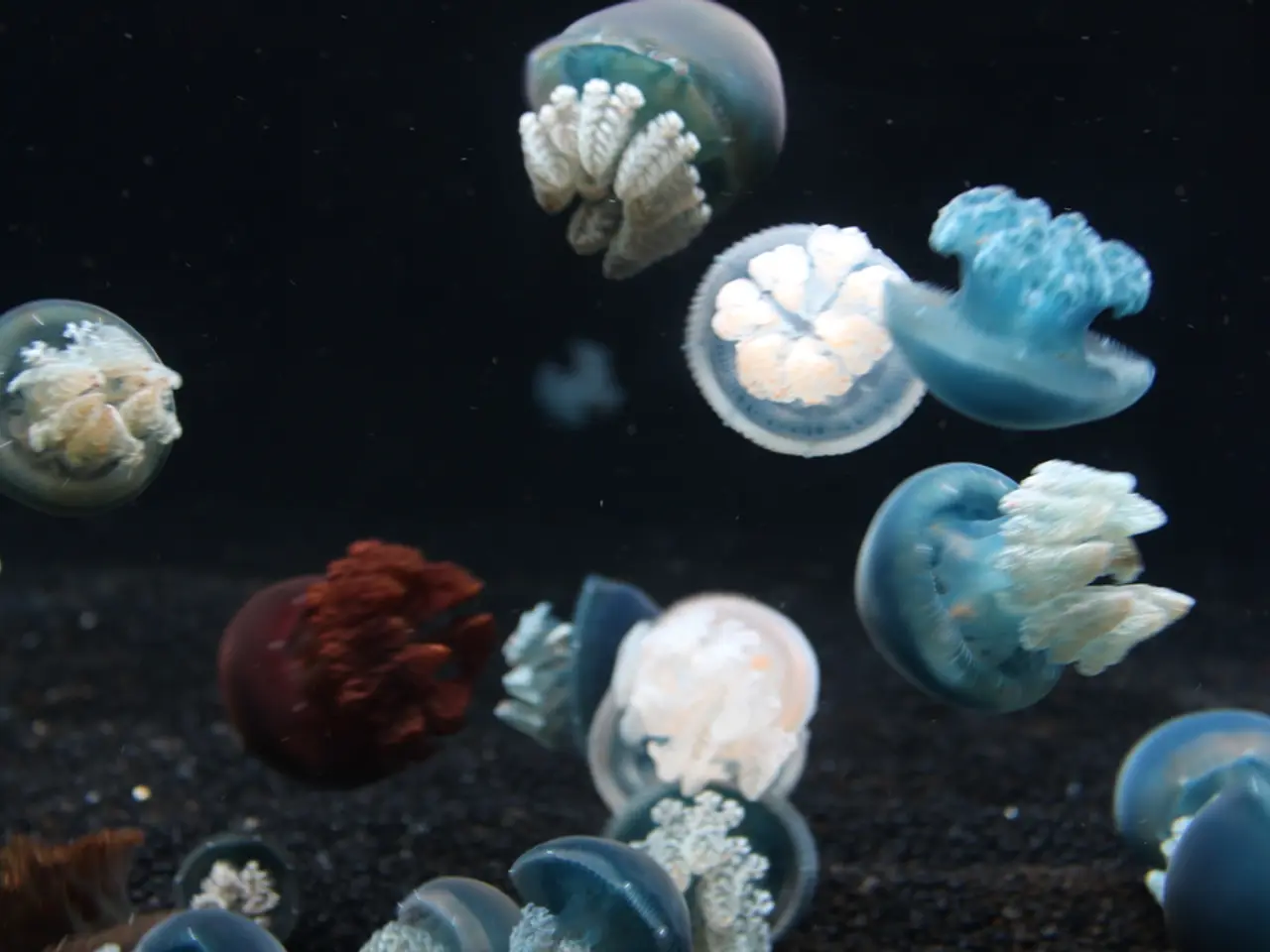Giant jellyfish immobilize France's biggest nuclear facility
In northern France, the Gravelines nuclear power plant, the country's largest with six pressurized water reactors, has experienced a temporary shutdown. This incident, triggered by a bloom of jellyfish in the water pump stations, has led to the shutdown of four reactor blocks [1].
The operator, Électricité de France (EDF), announced the shutdown on Monday morning, following an initial automatic shutdown of three units on Sunday evening [2]. The safety of the plant, employees, and the environment was not at risk, according to statements.
Other power plants are compensating for the outage at Gravelines, ensuring the power supply remains unaffected [3]. The restart of the four reactor blocks at Gravelines is likely to happen gradually.
This is not the first time jellyfish have caused a nuclear power plant shutdown. In fact, historical records show similar incidents, with the International Nuclear Information System noting several emergency shutdowns triggered by jellyfish presence in the 1980s [3].
Jellyfish have been known to clog cooling systems, leading to automatic safety shutdowns. The most recent and notable instance occurred in August 2025, when a massive influx of jellyfish forced the shutdown of four reactors at the Gravelines nuclear power plant due to clogged cooling water pump filters [1].
The type of jellyfish involved in the Gravelines incident is currently under investigation. Rising sea temperatures and increasing jellyfish populations, including invasive species such as the Asian Moon jellyfish, have been linked to these incidents [1][2].
The jellyfish accumulation occurred in the filter drums of the pump stations, located in the non-nuclear part of the plant [2]. Despite causing operational disruption, these shutdowns have so far posed no direct safety risks to staff, the environment, or the reactor core integrity [1][2].
This incident highlights a growing environmental risk for coastal nuclear plants worldwide as marine ecosystem shifts lead to more frequent jellyfish blooms, creating an unexpected but impactful challenge to nuclear power reliability [2][4].
As maintenance work continues on the other two units of the Gravelines nuclear power plant, the production at the site is temporarily completely shut down [5]. The operational challenges in coastal nuclear facilities, increasingly vulnerable to environmental changes influenced by climate change, are becoming more apparent. The need for routine cleaning and maintenance of cooling system filters to remove jellyfish blocked in intake channels is a testament to this.
[1] BBC News. (2025, August 1). Jellyfish force Gravelines nuclear plant to shut down in France. [online] Available at: https://www.bbc.com/news/world-europe-53768657
[2] Tosco, A. (2025, August 3). Jellyfish Shutdowns Highlight Rising Environmental Risk for Nuclear Power. The New York Times. [online] Available at: https://www.nytimes.com/2025/08/03/science/climate/jellyfish-nuclear-power-france.html
[3] International Atomic Energy Agency. (n.d.). Emergency Shutdowns Triggered by Jellyfish Presence. [online] Available at: https://www.iaea.org/resources/emergency-shutdowns-triggered-by-jellyfish-presence
[4] The Guardian. (2025, August 5). Jellyfish blooms pose unexpected challenge to nuclear power reliability. [online] Available at: https://www.theguardian.com/environment/2025/aug/05/jellyfish-blooms-pose-unexpected-challenge-to-nuclear-power-reliability
[5] Électricité de France. (2025, August 2). Maintenance work at Gravelines nuclear power plant. [online] Available at: https://www.edf.fr/en/gravelines-nuclear-power-plant-maintenance-work-underway
- The incident at the Gravelines nuclear power plant, a significant contributor to France's energy supply, was not the first to be caused by a bloom of jellyfish clogging the cooling systems, as historical records show similar cases in the 1980s and as recent as August 2025.
- The shutdown of the Gravelines plant, due to a surge of jellyfish in the water pump stations, not only stresses the importance of regular cooling system filter maintenance but also underscores a growing environmental risk for coastal nuclear plants worldwide, as climate change-induced marine ecosystem shifts lead to more frequent jellyfish blooms.
- As scientific research continues on the impact of climate change on marine life, attention is drawn to the increasing populations of jellyfish, including invasive species like the Asian Moon jellyfish, which have been linked to nuclear power disruptions, such as the recent shutdown at Gravelines, and the potential risks they pose to plant operation and the environment.




